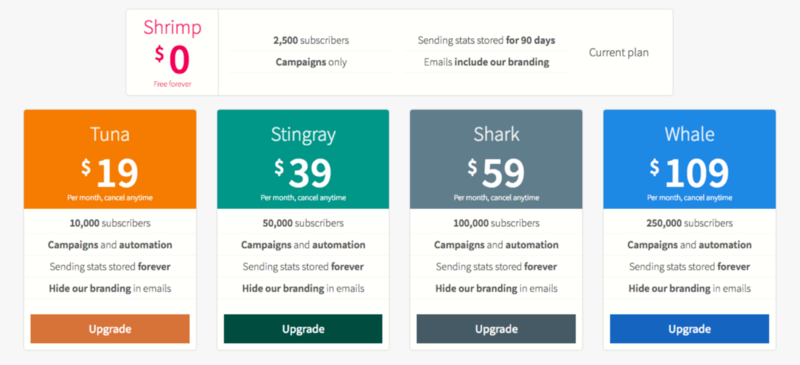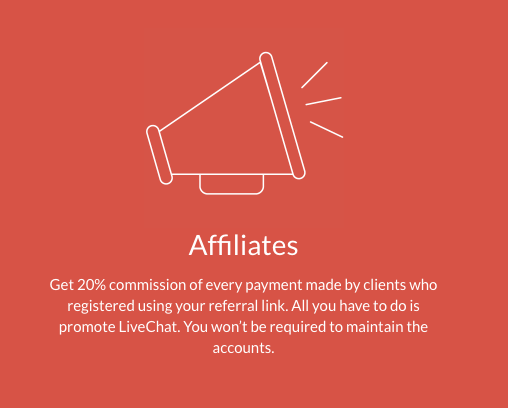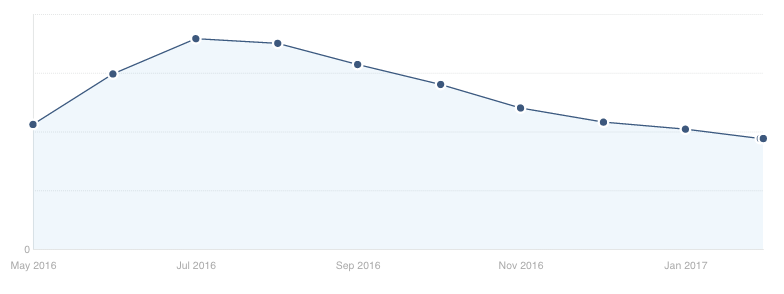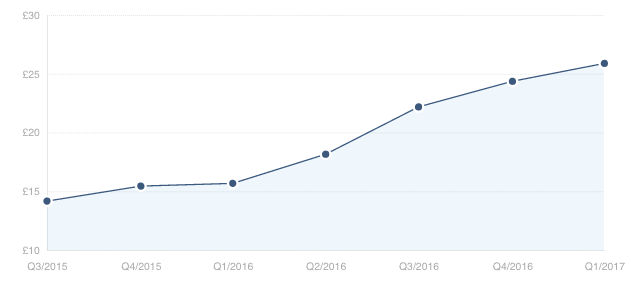You're not charging enough

When we first added pricing to EmailOctopus in late 2015 our philosophy behind the pricing was simple. To be significantly cheaper than our competitors.
It’s worth considering, at the time, the platform was only a side-project alongside the salary and security that a full-time role could offer. The money provided by EmailOctopus was ‘beer-money’ and we were yet to anticipate becoming a full-time business. In side-projects, that attitude is not unusual, any money you make from it you treat as a bonus — and it can lead to you undervaluing your time and more importantly, your business.

Underpricing your side project at an early stage makes it so much more difficult to turn it into a full-time business. If you start out only charging $5 per month per plan, then you’ll require 1000 paying users before getting close to matching your Silicon Valley/London developer salary. It’s so easy to get trapped in this circle, where you charge low amounts (because you can) but then can’t afford to grow the business to become what it’s fully capable of.
The most important thing to remember when running your SaaS is that users use you for the value you provide. Ask yourself regularly, are our customers getting value from our product? Would their value still significantly outweigh the pricing, if we increased our prices? Identify what users consider the value in your product. As an email marketing platform, we get so wrapped up on sending emails that we often forget that our users are not paying us to do that. They’re paying us to deliver emails, so they can communicate with their customer base.
Competing on price is a very acceptable thing to do. If your SaaS is a simpler or lighter version of an established product, then it’s a great approach to reduce your pricing so you can capture those users who don’t need all the bells and whistles that more expensive alternatives offer. At EmailOctopus, that’s our core proposition — we focus on making email marketing simple and cost effective. We don’t have the bloat of Mailchimp with their Facebook ad campaign tools and mobile apps, nor do we have the need to have hundreds of deliverability engineers (as Amazon SES handle deliverability for EmailOctopus customers) our pricing reflects that.

One benefit of increasing prices is that a shift upstream can often bring a better standard of customer. As a hugely discounted email marketing platform, we left ourselves open to spammers and less desirable customers who required a lot of support and monitoring. Users who understand the value of a product to their business, will pay for it. They’re the users you want.
So what should I increase my prices to?
This is a question only you, within your SaaS business can answer and it’s based on research that you’ll need to conduct. You’ll need to consider a few things:

Your cost of acquisition. Many companies offer affiliate schemes where they offer affiliates a significant cut of MRR. Their prices have to be adjusted to reflect this, in extreme cases such as ConvertKit, they offer 30% commission to affiliates. Essentially meaning, your prices need to be 30% higher. Google paid ads (Adwords) aren’t cheap either, nor are Facebook ads. You’ll need to consider the impact of pricing on the life-time value of customers, as the LTV is higher you can afford to bid more. One benefit of increasing prices is the fact that you can spend more on advertising to them.
The value of your product. This I’ve spoken about in depth above, but the more value you provide the more you can charge. Consider the various personas who use your platform to ensure your pricing and plans reflect the value you are offering to each of them. PriceIntelligently have a number of great blogs on this, which I’d suggest reading. Our last round of pricing changes saw an extra plan added — we added this after researching and analysing the existing plans and usage patterns of our existing customers.

What are your competitors charging? At EmailOctopus, our core proposition is that we are priced at a significantly cheaper rate than Mailchimp. We offer a simpler, lighter platform and have a belief that email marketing is overpriced. One thing we really spend time on before changing our prices is doing a huge amount of research into what our competitors offer, which we display in a regularly updated spreadsheet. That research doesn’t always lead to a price increase, indeed our most recent change included an extension to our free plan ensuring we remained one of, if not the, cheapest platform available.
What will my existing users think?
There are various ways companies treat their existing customers, with the most common being grandfathering. When grandfathering you essentially don’t increase prices for customers who remain on the same product for the lifetime of the account. As a company scaling up, you may see this as a fair way to treat the users who supported you in the beginning and it’s what we do at EmailOctopus. Our early customers were a gift to us, they helped us learn more about our pricing model and helped drive the direction of the product, we love to treat them well.

The other alternatives are offering discounts to existing customers. In the case of a grandfather discount, you would agree with your customer to retain the same low pricing for the coming 6 or 12 months — ensuring you treat them fairly but do reap the benefits of the extra revenue in the mid term. Discounts are much easier to justify if there has been a notable, but perhaps not significant improvement to their plan.
The bravest decision is to immediately increase their prices to your new plans. Before doing this you’ll want to check that your customer base is not too price sensitive. If you’ve spent the last 3 years advertising yourself as the cheapest around and then increase pricing to be on par, if not greater than, competitors then the likelihood is you’ll upset a few customers. Immediate, direct price increases are most easy to do if you have made a significant improvement to the platform which the customer will enjoy on their plan. You’ll need to explain this increase to customers carefully and clearly. It’s something Expensify did particularly well here.
Post price increase
After a price increase, keep an eye on your conversion rates (lead>paid and visit>lead) and the impact on new customers. A well considered price increase almost always won’t significantly impact conversion rates, but will certainly increase ARPA (average revenue per account).

Increasing your SaaS businesses ARPA is the fastest way to grow your monthly revenue without worrying about scaling marketing spend or comprising your tech stability.
At EmailOctopus it’s helped us scale, make further hires and invest more back into the product. Something we couldn’t have done without losing the side-project mentality we started with.